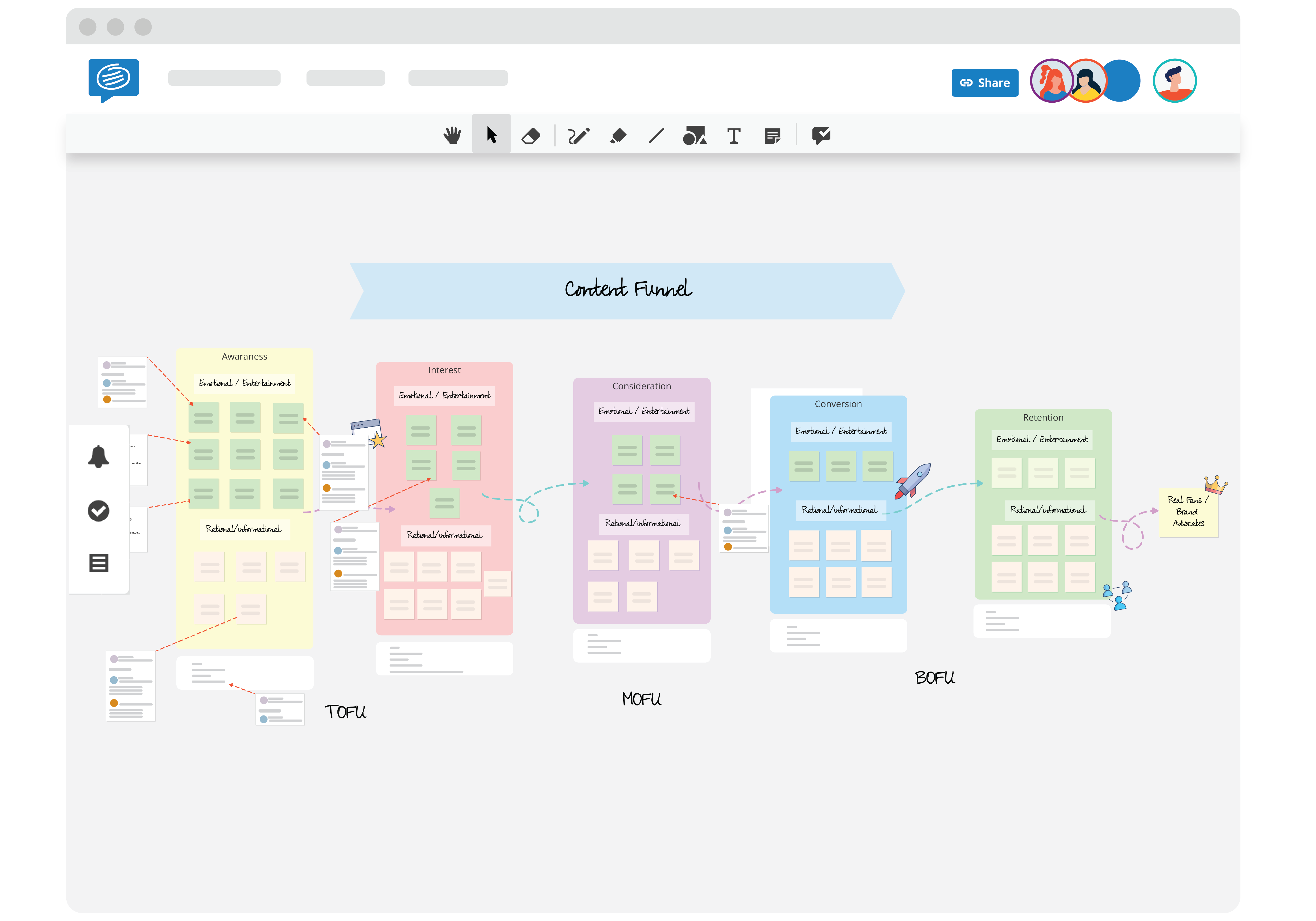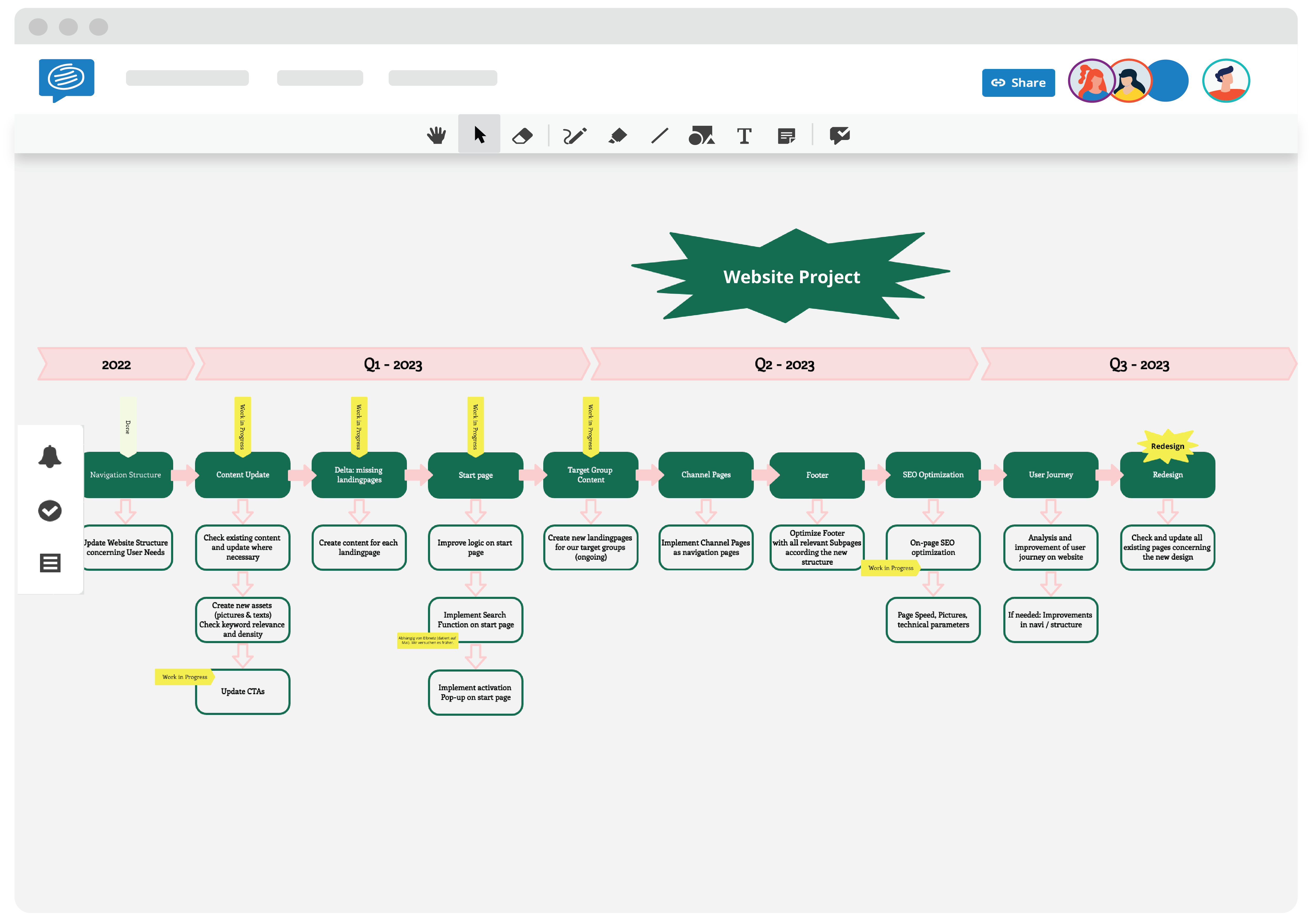Great marketing needs a solid plan: Visualize your marketing projects with Conceptboard
Our online whiteboard provides ample space for all your ideas, strategies, and plans. Whether you're working on concepts, coordinating with your service providers, or simply conducting internal team discussions, Conceptboard combines numerous features into one tool, elevating collaboration with your team to an entirely new level.

Every seasoned marketer knows the reality: Marketing rarely unfolds as planned. Most of the time, two hands aren’t enough to manage the impending deluge of marketing projects. Creativity, after all, requires room and time to flourish.
The phrase “everything goes according to plan” seems to be a rare occurrence in the world of marketing. Sticking to timelines? Not so easy. But it doesn’t have to be this way all the time. Even amidst a multitude of projects and ideas, there are valuable tools and resources to help you stay on top of things. Whether it’s digital campaigns or event planning, social media management, or traditional project work, we have something for you!
Our online whiteboard provides ample space for all your ideas, strategies, and plans. Whether you’re working on concepts, coordinating with your service providers, or simply conducting internal team discussions, Conceptboard combines numerous features into one tool, elevating collaboration with your team to an entirely new level. Regardless of whether you and your team are working remotely, in a hybrid setting, or in the office.
What advantages does an online whiteboard offer for your marketing projects?
Using an online whiteboard not only provides you with an improved overview but also saves you time (allowing you to leave work earlier). Projects can be easily visualized with Conceptboard, allowing you to create roadmaps, track project progress, conduct reviews, and set up status reports quickly and structurally.
With an online whiteboard, everyone is on the same page, and no information is lost. Even complex multi-person voting processes are made easy with the voting function. Workshops or brainstorming sessions can take place from anywhere, without wasting valuable time searching for a common meeting time.
What truly sets Conceptboard apart is its intuitive interface, allowing you to work in real-time with a keyboard, mouse, stylus, or even your finger. With Conceptboard, your marketer’s creativity not only has the space to flow freely but also the time it needs.
But that’s just the beginning! In this article, we will demonstrate with concrete examples from the marketing and communication field how marketing experts can use Conceptboard for their projects. Let’s get started and discover how Conceptboard can take your marketing projects to the next level!
What can you do with an online whiteboard in marketing?
1. Visualizing a Marketing Funnel
A crucial step in visualizing your marketing projects is creating a marketing funnel. A marketing funnel is essential for clearly and systematically visualizing the entire journey of a potential customer, from their initial interaction with your company to the so-called conversion. Understanding your customers’ exact customer journey enables you to comprehend the various stages of customer management and strategically plan actions to increase the conversion rate. With Conceptboard, you can visualize your funnel step by step and present your ideas transparently and attractively.
2. Designing Websites and Providing Feedback
Creating prototypes and wireframes for web and app content is an essential component of many marketing projects. Once you have gathered all the content that should be available on the page, the next step is to structure the content appropriately and arrange it logically. Use Conceptboard to create your designs and gather feedback from your team. Conceptboard’s commenting feature facilitates smooth collaboration and makes the implementation process even more efficient. An added bonus? Utilize our wireframe template to represent your content in as much detail as possible and optimize it for the mobile version of your website.
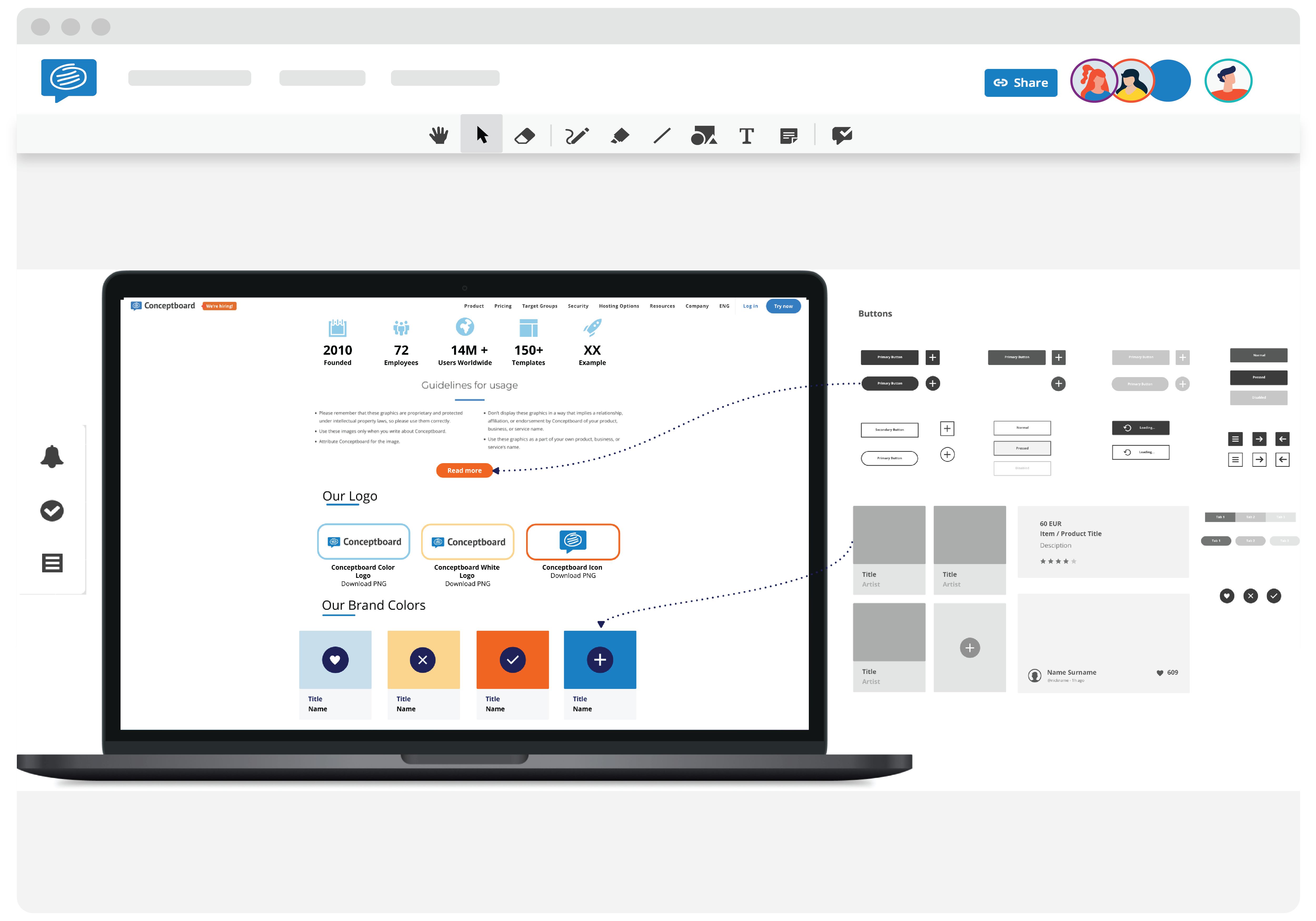
3. A Roadmap for your Website
A clearly defined roadmap is indispensable for optimizing and continually evolving your website. Website managers understand that planning and advancing a website should never come to a standstill. Therefore, planning is key. With Conceptboard, you can set goals and keep track of the progress of your website projects.
4. Creating Annual Calendars and Events
Events and trade shows play a significant role in your marketing strategy? Then timely planning is crucial! Create a yearly event calendar with Conceptboard to keep track of all scheduled events. This way, you’ll always have all the dates at your fingertips and know when and where everything is happening. Sounds like a lot of work to you? Don’t worry, we’ve got you covered with our annual planner template. It is ready to use so you can start right away!
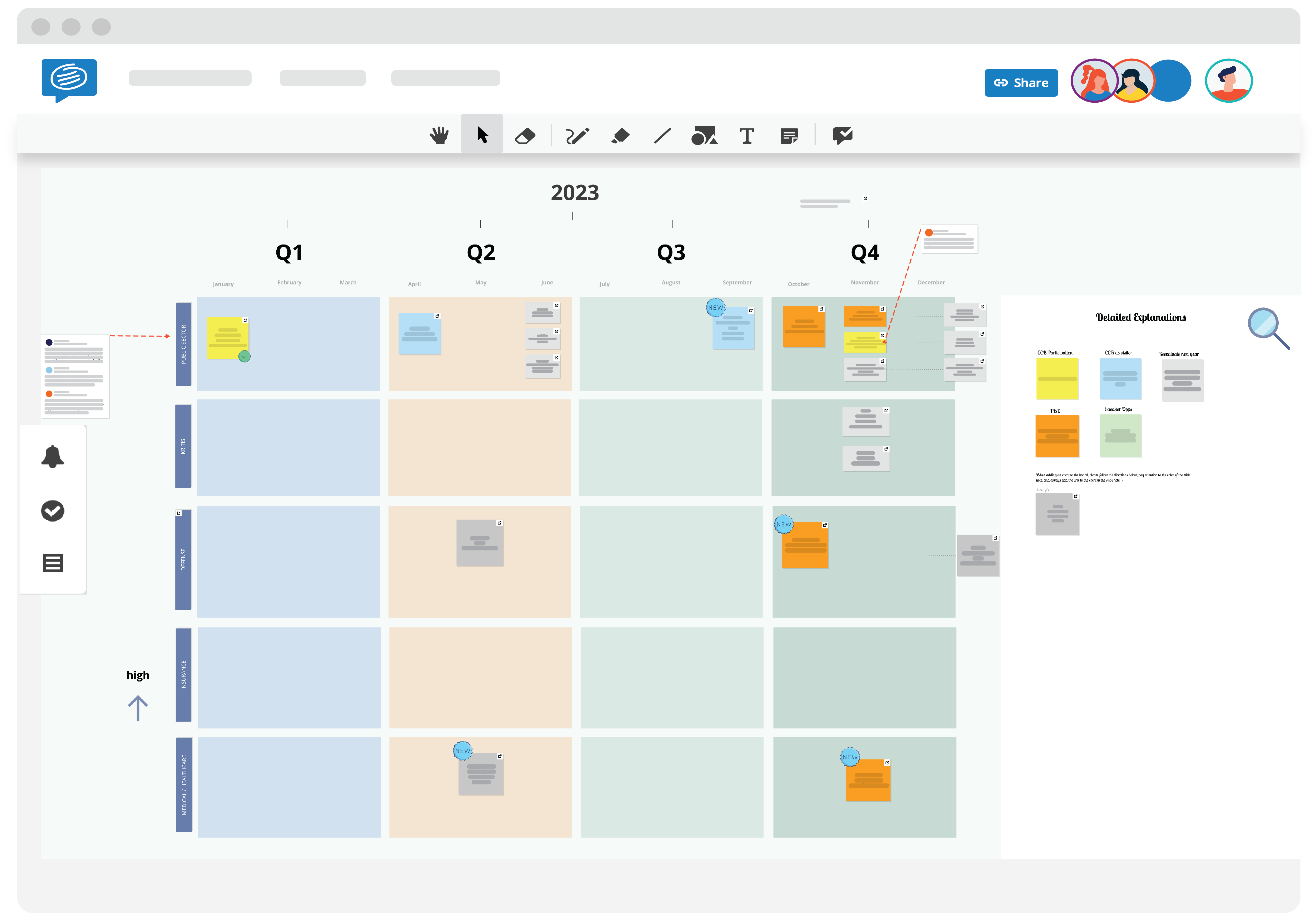
5. Event and Tradeshow Planning
The organization of events can be a real challenge, especially when multiple team members are involved. However, with Conceptboard, event planning becomes a breeze. Share ideas, tasks, and resources to collaborate seamlessly with your team and make your events a success. Prioritize to-do items, set deadlines for service providers, and always have all the event information at your fingertips on one board. You can also upload large quantities of images, such as views of your trade show booth, to Conceptboard without causing long loading times.
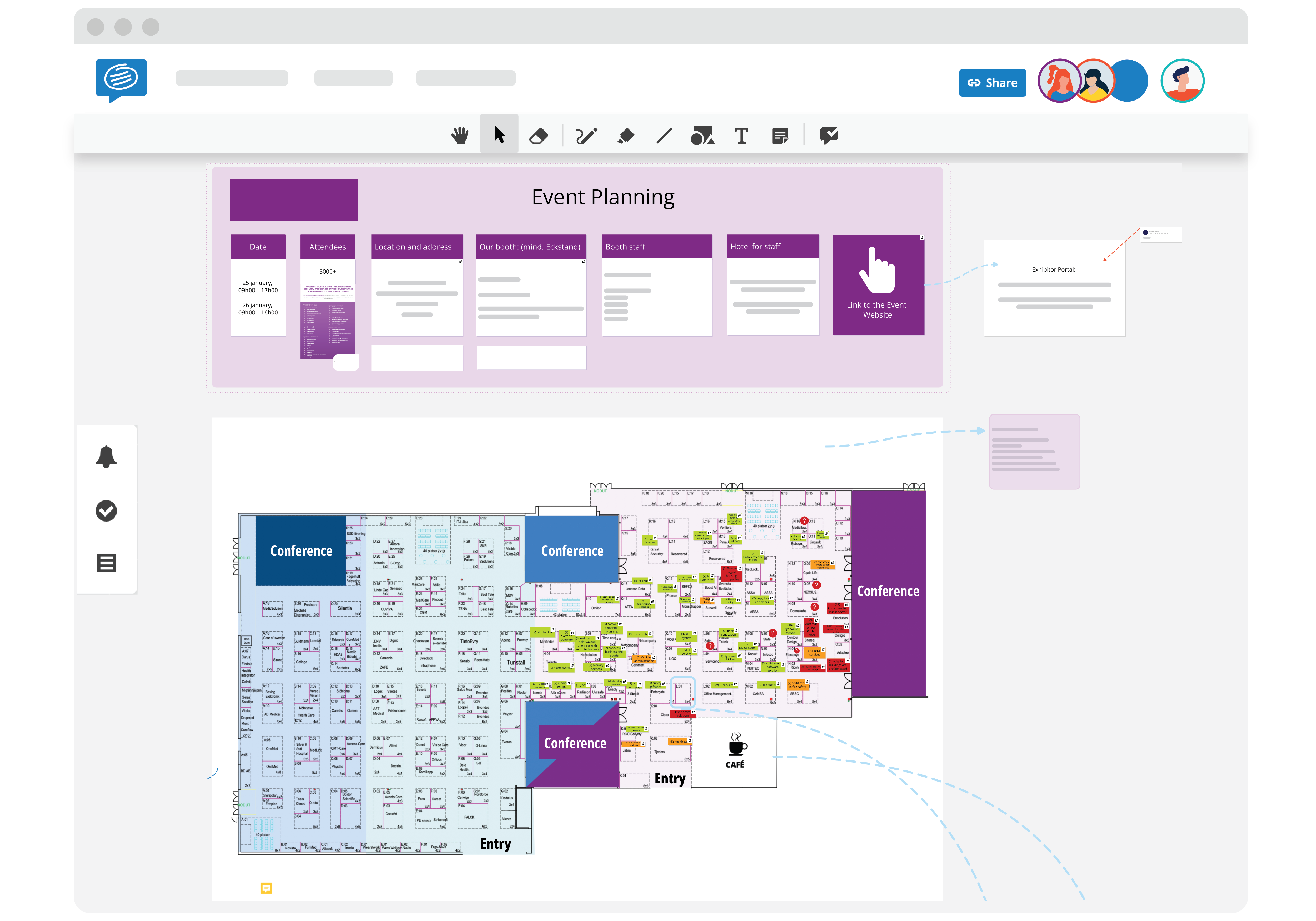
6. Design Feedback
Visual design is a central aspect of marketing and often requires several rounds of feedback. Providing visual feedback via email or in word processing programs like Microsoft Word or as PDFs can be complicated. Text alone may not suffice to convey your exact vision to the design team. This is where Conceptboard comes into play. For example, if a designer creates a new graphic, you can easily upload the document to a board with a single click. This allows you to provide feedback using comments or drawing tools, ensuring the designer precisely understands your vision. Collaboration between the team and the design process is facilitated and expedited, reducing the potential for misunderstandings.
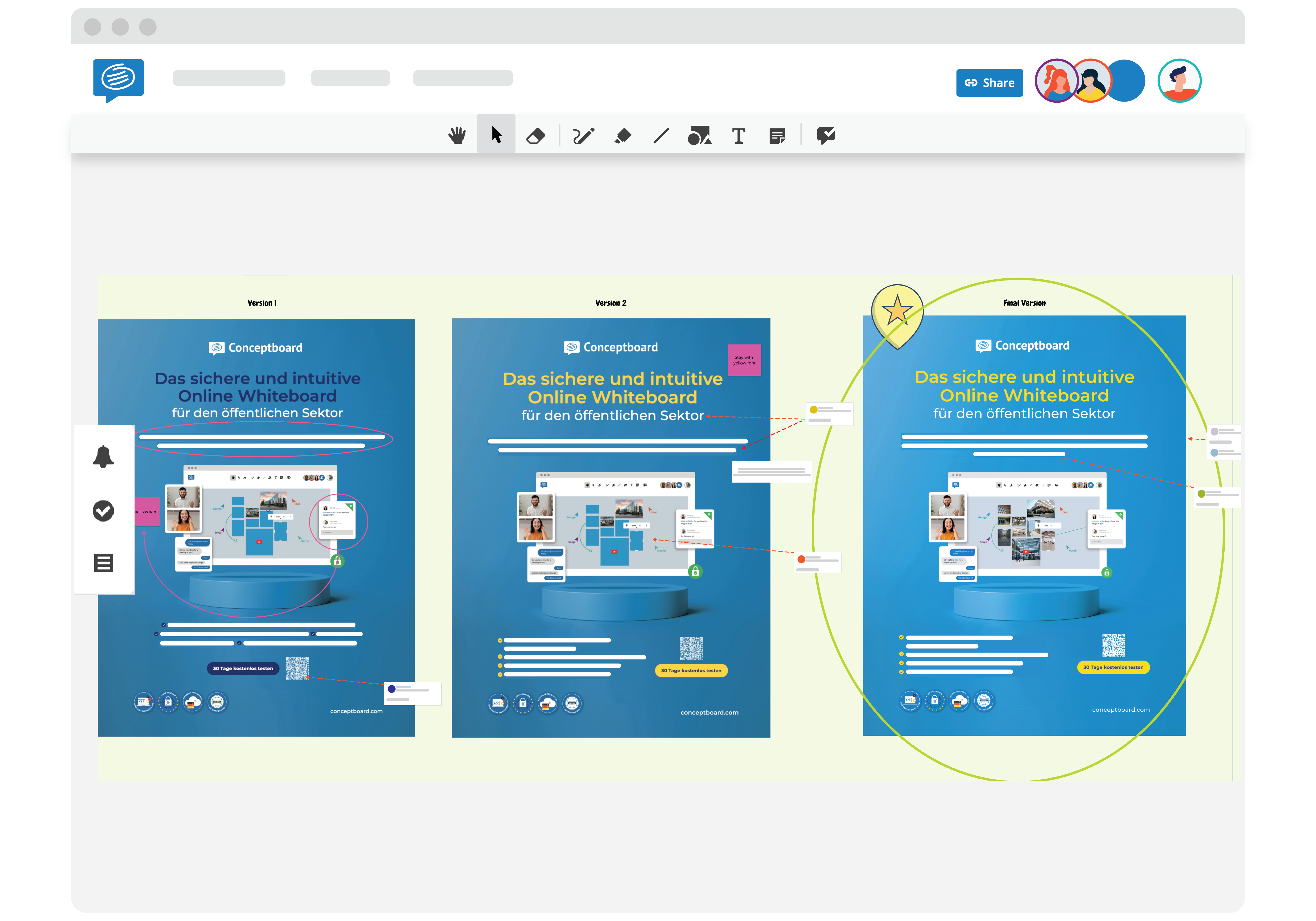
7. Monitoring Competitors and Their Products
Only those who know their competition truly know themselves! In a highly competitive environment, conducting thorough competitive analysis is crucial for success. Use Conceptboard to gather and analyze market information and develop new strategies to secure the top position for yourself.
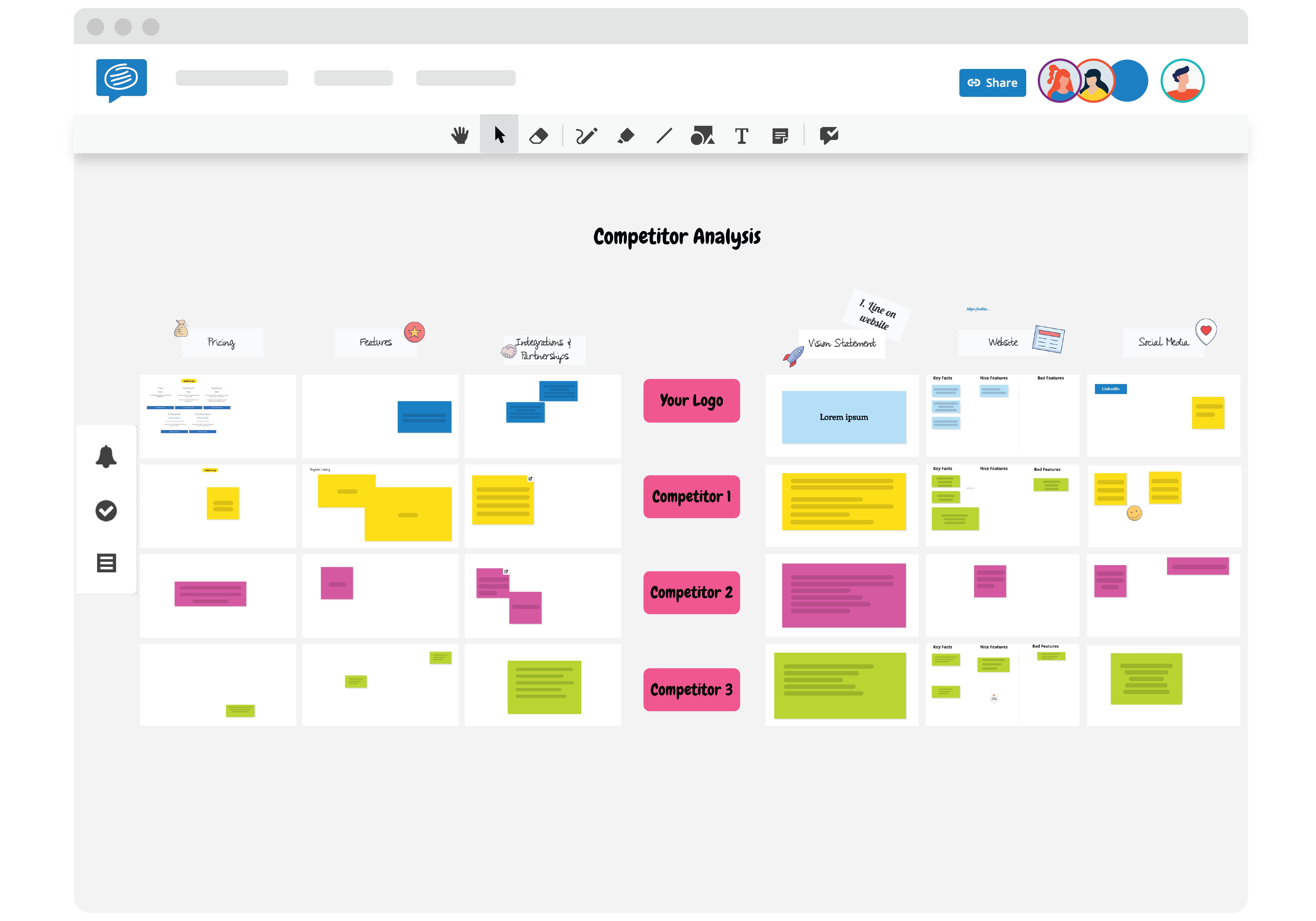
8. Visualizing a Lead Management Process
To ensure the success of your marketing projects, a lead management process is crucial. Marketing truly becomes measurable when it results in qualified inquiries. Leads, potential customers, are at the core of your marketing projects. However, the question often arises: What actually happens to incoming leads in your company?
This is where Conceptboard comes into play, as it allows you to visually represent the entire lead management process. This means you can track, from start to finish, how leads are generated, captured, categorized, and ultimately converted into sales opportunities. Through this visualization, you ensure the smooth flow of this critical process and make sure potential customers are not lost in the shuffle.
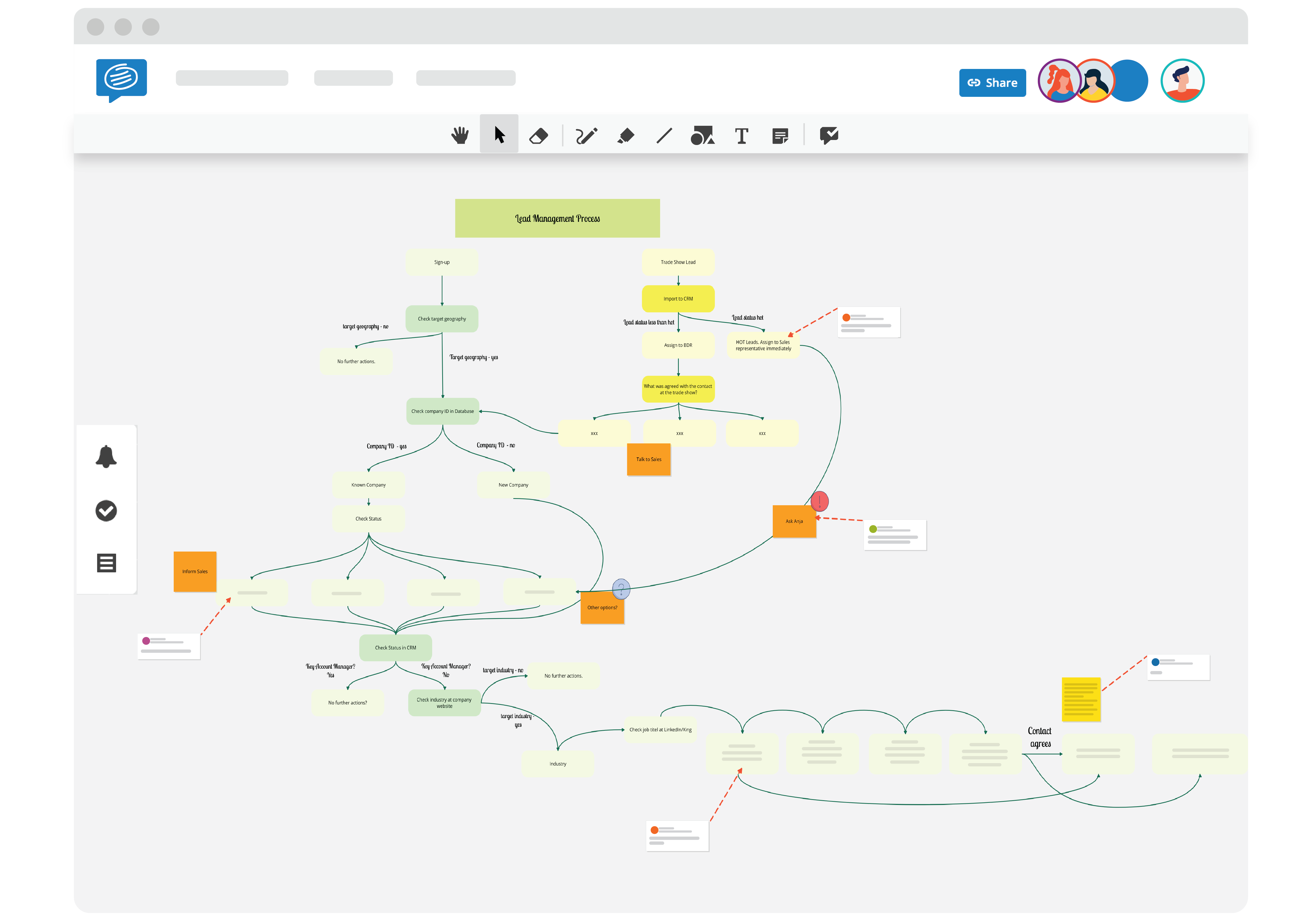
9. Corporate Design Creation
Creating a corporate design is of paramount importance because it serves as a visual signature and should authentically and memorably represent your company and its products. It is crucial to involve the ideas and perspectives of your team because a successful corporate design should reflect the identity and values of your company and its employees.
Whether it’s logo design, color palettes, fonts, or other visual elements, Conceptboard enables you to gather ideas and efficiently plan and design all aspects of your corporate design. This ensures that your brand is not only authentic but also consistently and appealingly perceived.
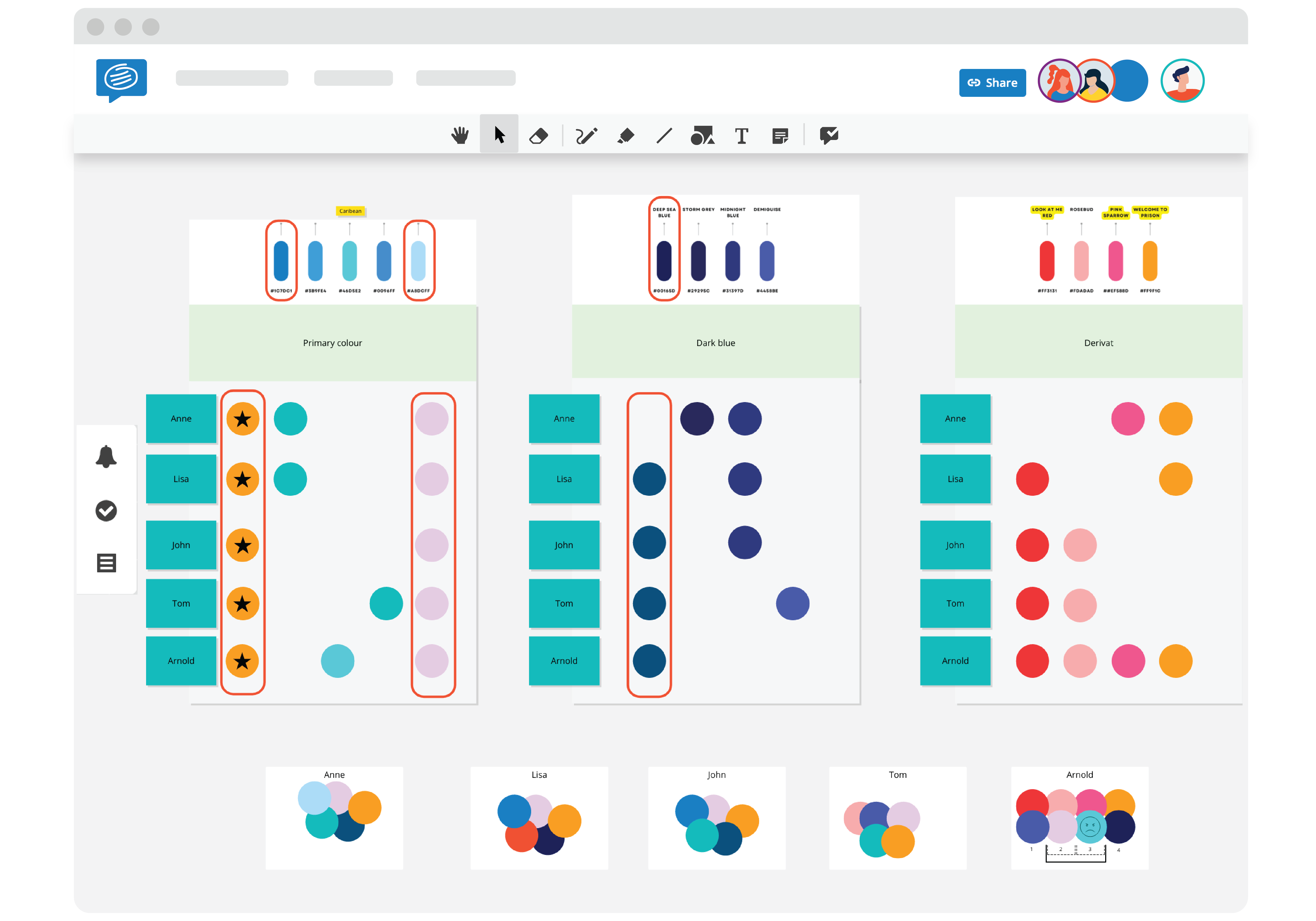
10. Marketing Campaign Planning
Well-thought-out campaign planning is crucial for the success of your marketing projects. It lays the foundation for effective execution and the desired impact on your target audience and the market.
Conceptboard provides you with the ideal environment to organize your campaigns from start to finish. You can gather ideas, structure relevant content, and efficiently allocate the necessary resources. This ensures that your campaigns run smoothly, whether they are online or offline.
Conceptboard for Your Marketing Team
To sum it up, we may not be able to reduce your workload, but we can certainly help you work faster and more efficiently, save time, and stay organized. Conceptboard proves to be the perfect tool not only to visualize your marketing projects but also to successfully bring them to life. Its straightforward and intuitive use fosters seamless collaboration with your team, making it effortless to turn your creative ideas into reality.
So, why not invite your entire team to explore Conceptboard and harness its endless possibilities? Our powerful tool is ready for you and your team to elevate your marketing projects to the next level. Find more information here.
Therefore, dive into the world of marketing, visualize your projects, and experience the power of Conceptboard! We wish you a successful journey through the creative realm of marketing and are here to assist you with any questions. Happy marketing, and may you achieve great success in bringing your visions to life!
